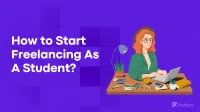Hopping from one client to another can be tiring. Having more consistency in your freelancing work can give you some peace of mind. All of these are reasons why it’s important for freelancers to learn how to establish long-term relationships with their clients.
Getting new clients is a ton of work and you don’t always know how much time it’ll take to land a new gig. It’s also a bit hard to trust new clients right away. Can you be sure that you will be paid fairly, on time, or even at all?
So, how can you build a long-term relationship with a client?
Check out the 3 C’s and tips below:
The 3C’s for Building Long-Term Relationships with Clients
There are 3 core elements that can help you create long-lasting relationships with your clients. As freelancers, having these 3 things down can improve the success of your work or business. No matter what industry or field you are in, these 3C’s can help you get continuous work and of course, payments.

1. Consistency
There’s nothing like a flakey freelancer that gives a bad name to the entire freelancing community. Always showing up is one of the most important things that you can do for a client. You have to be consistent when talking to them, if you tell your clients you are available from 9 AM to 12 PM, make sure that you really are.
Check out how you should plan an ideal day schedule as a freelancer.
Aside from your availability, you also need to be consistent with your work. There are some that will only give their all at the start of a project. But in the middle of the project, the quality of work starts to degrade.
There is a high probability that a client will start a long-term relationship with you if they see that you are consistent in everything you do. Answer the following questions to get an idea of how consistent you are with your work and your clients:
- How long does it take you to reply to an email or message during your work hours?
- Do you spend the same amount of time and effort on all of your projects?
- Are you able to submit deliverables on time?
Now, if you barely reply to emails or you send in your work after the deadline, there’s no reason for clients to keep working with you. Even if your work is outstanding, if you are not consistent, it may not be a good enough reason for a client to keep you on their roster.
2. Communication
In any relationship, communication is very important. The same goes for client-freelancer relationships and failure to communicate can be the end of things.
Now, this isn’t a simple hi or hello. You’ll appear more trustworthy if you ask relevant questions about their business or their project. A client gets to know you through what you say and how you say it.
If you always find that you and your clients have miscommunications when it comes to details of the project, deadlines, or payment issues then this may be a cause of strain in the relationship. This can be a reason for a client to not hire you again in the future. Remember what you did wrong and learn from your mistakes. Experience from a previous project, particularly those managed by a client success manager, can be the element that will help you create a long-term relationship with your next client.
Check out the 7 effective client communications skills on this blog.
3. Contracts
The final C for long-term relationships is contracted. In the world of freelancing, having a freelance contract is the basis of a successful project.
To simplify the contract creation process, take advantage of project management tools. These platforms often have sample freelancer contracts you can use or you can upload your own and have it signed digitally.
Tips for Freelancers
Now that you know the core elements for building a long-term relationship with a client, check out these additional tips to wow your clients.
1. Gauge Your Clients
Getting to know a client takes some time. You need to put some effort into understanding your client so you know the right way to talk to them. To gauge clients, there are 2 things you need to take note of:
a. Personality
What is the personality of your client? Is it very warm and chipper? Are they full of energy? Maybe they are a little reserved and conservative? Whatever their personality may be, it’s up to you to adjust accordingly. This doesn’t mean you have to be inauthentic.
For example, you may need to dial back your enthusiasm if your client is a tad serious. The same goes if you have a bubbly client who is looking to work with someone who can match their energy—you’ll need to boost yourself up a bit.
If you learn the personality of your clients through the MBTI Test and are able to jive with them, the chances of getting into a long-term relationship are very high. Think about it, would you keep working for someone who is hard to read? Someone you can’t understand if you did a good job or not? Clients will also think that way, why should they keep hiring someone who they feel uncomfortable talking to?
b. Working Style
Aside from personality, you also need to know the working style of your client. For example, do they prefer using Microsoft Word, Google Docs, or Pages? It might not be a big deal for some but you have to cater to your client’s preferences.
Is your client a stickler for rules? Do they want every minute of the project accounted for or do they prefer you just submit your deliverables? All of these working styles can make or break a relationship with a client. Some prefer daily check-ins while others will just give you instructions and the next time you talk is when you will receive your payment.
All clients have different working styles and if you can match that style, your client will more likely want to continue working with you. This can then lead to a long-term working relationship as it is both convenient and beneficial for you and your client.
2. Don’t Say Yes When You Want to Say No

As much as freelancers have to please their clients, you can’t always say yes to everything. If you do this, you’ll start to resent work and you’ll get a strained relationship with your client. Not to mention, you’ll burn out easily.
Check out 9 ways how you can stop overcomitting your client.
3. Develop Soft Skills
No matter how good of an artist, programmer, or social media manager you are, you won’t get a long-term relationship with clients without developing your soft skills. Consider the two following soft skills to develop:
a. People Skills
Learning how to talk to people is a difficult skill to master, mainly because everyone is so different. There are clients who are easy to work with and others not so much. But if you have the right people skills, you’ll be able to deal with them diplomatically.
b. Email or Online Etiquette
It’s fairly common for freelancers to communicate with clients online so it’s highly important to learn the correct email or online etiquette. For example, should you use emojis or not? When is the right time to send a message on Slack?

4. Keep it Professional
Finally, don’t get too chummy with your client. This may not be the corporate world but freelancing still works. You can make friends with your clients but always remember that you are a freelancer first who is running a business.
Recommended Reads: Top 7 Invoice Generator Software
Recommended Reads: Top Invoicing Software For Consultants
Conclusion
Everyone is different and you have to understand not to take things personally as a freelancer. Some clients will stick around and some will not. The only way to build a long-term relationship with a client is to actually try.
Also, learn 10 Things To Do When You Are At Risk Of Losing a Big Client
Recommended Reads: Best CRM Software with Invoicing
Read more: Top 10 Billing Software For Chartered Accountants
Recommended Reads: E-invoicing In GST: A Complete Guide
Recommended Reads: Billing Software For Export Business


















